長谷川豪『カンバセーションズ──ヨーロッパ建築家と考える現在と歴史』2015年、東京
Go Hasegawa: Conversations with European Architects, Tokyo, 2015.
Translated from the German by Jill Denton, Berlin
Translated from the English to Japanese by Harunobu Makio (Fraze Craze Inc.)
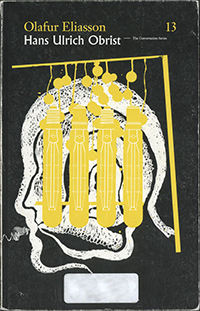
- Hans Ulrich Obrist (ed.): Olafur Eliasson.
The Conversations Series No. 13,
Walther Konig, 2008
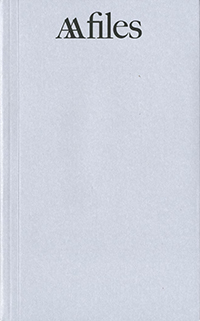
- Thomas Weaver (ed.):
AA Files Conversations,
Architectural Association, 2013.
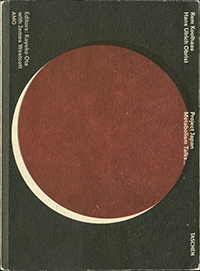
- Rem Koolhaas, Hans Ulrich Obrist,
Kayoko Ota, James Westcott (eds.):
Project Japan. Metabolism Talks,
Taschen, 2011.
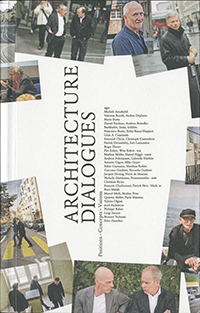
- Marc Angélil, Jørg Himmelreich (eds.):
Architecture Dialogues,
Braun, 2011
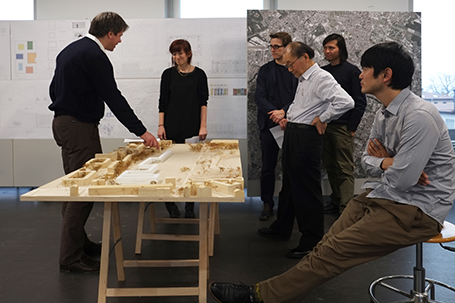
- Laurent Stalder and Kazunari Sakamoto were invited to the final critique of Go Hasegawa studio in the Academy of Architecture in Mendrisio, 2013. Photo by Takahiko Higuchi.
In Europe, where Japanese architecture came to be admired for its historical continuity at the latest in the Modern era - be this in the early work of Kenzo Tange, the projects of Kazuo Shinohara or, more recently, the innovative research of Atelier Bow Wow - this premise may well seem astonishing. Therein lies perhaps the sole criticism that we might make of this publication. Hasegawa's premise could easily be turned around and in consequence, from that perspective, the historical interest that Hasegewa claims to recognise in the work of his European colleagues would be proof not so much of an historical consciousness in Europe but rather of a late reaction to the dismissal of history in modernist discourse in Europe.
The heterogeneous selection of interviewee-architects gives cause for surprise, at first glance, for they are of three different generations, have accordingly diverse professional track records and hail from four different countries (three among them from Switzerland). Had Hasegawa not stated his basic aim in the preface, namely his wish to do nothing less than fathom the very foundations of contemporary architecture, then suspicions that this volume is the outcome of discussions conducted within an established network 'among friends' might well have been aroused, all the more so given that the author-editor tautologically justifies his selection by simply stating that it is his own. Also, the supposedly, obligatory premise - to approach history as the basis of architectural practice - reveals itself to be extremely broad ranging in scope. With Siza, it becomes a debate on the themes of Modernist architecture, with Oligati, the search for a non-referential, original architecture, with Märkli, a debate about the overall idea of "Western culture", with Lacaton + Vassal, the superimposition of various contexts and temporal horizons, with Flammer, the concept of "cannibalism" when dealing with references, and with Kersten Geers + David van Severen, aspirations to make something classically universal of one's own position. Yet it is precisely the gulf that opens between the answers that binds these conversations together and foregrounds the common interrogation behind each individual's personal standpoint: that old chestnut, "Where do we stand?" as pursued since the earliest days of Modernism, inter alia by Hermann Muthesius and Marcel Breuer.
This question, which has been voiced with increasing desperation since post-Modernism spelled the end of the grand Modern narrative, is the red thread in this publication, linking together the various interviews. Alvaro Siza examines fundamental issues such as the role both of the Modern and the new in contemporary architecture, or the relationship between architecture and politics respectively between architecture and nature. Valerio Olgiati grounds his architecture beyond signs, in a rational theory of design derived form the basic notions of space, structure and materiality and inspired by his reading of Mayan architecture. Peter Märkli, by contrast, sees himself as a builder and the European culture of architecture as the contextual framework for his architectural practice. Anne Lacaton + Philippe Vassal consider the prerequisite of their practice to be economy in the best sense of the term, i.e. a sound handling of the resources of architecture and their spatial potential. And while Kersten Geers + David van Severen legitimate their work through its coherence Pascal Flammer derives his architecture from his own biographical and phenomenological experience.
As diverse as the interviewee-architects' responses to this inquiry into their respective positions may be, the compiled conversations brings to light a shared understanding of both architecture as an autonomous discipline and the importance of defining its tools. Yet, despite such consensus, two contradictory positions can be distinguished: the demand for a narrative able to encompass one's complete oeuvre, such as Siza, Olgiati, Märkli, and Lacaton + Vassal touch upon in their respective interviews, is countered by the, in the best sense post-Modern attitude of the younger architects who are distrustful of any such narrative and demand instead an always fresh appraisal or legitimation of each individual project.
There is no better text format than the interview to epitomise this latter position. In contrast to the dogmatism of the manifesto, the definitive argument of an article or the critical dimension of theory, a compilation of interviews allows situative and subjective circumstance in flux to be recurrently reappraised and allegedly, fool-proof positions to be challenged time after time. This architectural attitude not only opens new perspectives, however, but also simultaneously holds a hidden menace, namely that the immediacy and subjectivism of a discussion may cause healthy individualism to flip unthinkingly into arbitrariness. Yet Go Hasegawa steered well clear of such danger in Conversations with European Architects and indeed found the perfect format in which to pursue his inquiry into the foundations of architecture. Moreover, the compilation of interviews not only allows us readers to study a choice range of positions in contemporary European architecture but also constitutes an excellent introduction to the thought and creative practice of Go Hasegawa himself.
Laurent Stalder (b. 1970, Lausanne) is professor for the history and theory of architecture at the Department of Architecture at the Swiss Institute of Technology (ETH). The main focus of his research and publications is the history and theory of architecture from the 19th to the 21st centuries where it intersects with the history of technology. His most recent publications include Hermann Muthesius: Das Landhaus als kulturgeschichtlicher Entwurf (2008), Valerio Olgiati (2008), Der Schwellenatlas (2009), God & Co. François Dallegret: Beyond the Bubble (2011), and Atelier Bow-Wow. A Primer (2013).
Tobias Erb (b. 1985, Bern) is an architect graduated from the Swiss Federal Institute of Technology (ETH). There he is currently a research assistant at the chair of Laurent Stalder at the Institute for the History and Theory of Architecture. His research focuses on the intersection of architecture and engineering and examines the correlation between scientific and technological developments and architectural thought.
- 『長谷川豪 カンバセーションズ──ヨーロッパ建築家と考える現在と歴史』2015年、東京
- Go Hasegawa: Conversations with European Architects, Tokyo, 2015


